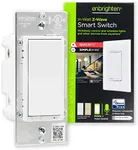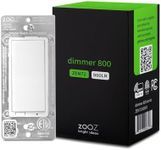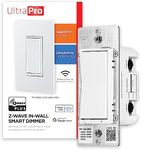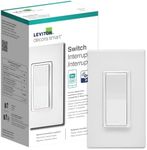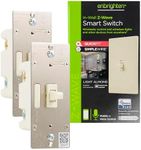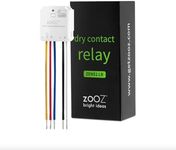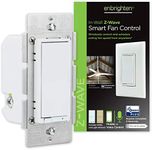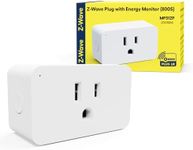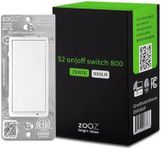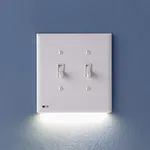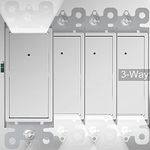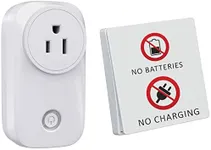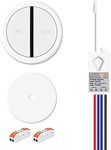Buying Guide for the Best Z Wave Switch
Choosing the right Z-Wave switch for your home automation system can greatly enhance your convenience and control over your lighting and other devices. Z-Wave switches are smart devices that allow you to control your lights remotely, set schedules, and integrate with other smart home devices. To make the best choice, you need to consider several key specifications that will determine how well the switch fits your needs and integrates with your existing setup.CompatibilityCompatibility refers to whether the Z-Wave switch will work with your existing smart home hub or controller. This is important because not all Z-Wave switches are compatible with all hubs. To navigate this, check the specifications of both your hub and the switch to ensure they can communicate. If you have a specific hub, look for switches that explicitly state compatibility with it. If you are starting from scratch, consider a switch that supports a wide range of hubs for future flexibility.
Load CapacityLoad capacity is the maximum amount of electrical load that the switch can handle. This is crucial for safety and functionality. Z-Wave switches come with different load capacities, typically measured in watts. For standard lighting, a switch with a lower load capacity (up to 600 watts) is usually sufficient. For heavier loads, such as multiple lights or appliances, you may need a switch with a higher load capacity (up to 1800 watts or more). Assess the total wattage of the devices you plan to control with the switch to choose the appropriate load capacity.
Single-Pole vs. 3-WaySingle-pole switches control one light or a group of lights from one location, while 3-way switches allow control from two different locations. This is important for convenience and functionality in different areas of your home. If you need to control a light from only one place, a single-pole switch is sufficient. However, if you want to control a light from two locations, such as at the top and bottom of a staircase, you will need a 3-way switch. Determine your control needs based on the layout of your home and the locations from which you want to control your lights.
Dimming CapabilityDimming capability allows you to adjust the brightness of your lights, which can enhance ambiance and save energy. Not all Z-Wave switches have dimming features, so this is an important consideration if you want this functionality. If you prefer to have control over the brightness of your lights, look for a Z-Wave switch with dimming capabilities. If dimming is not necessary for your application, a standard on/off switch will suffice. Consider the type of lighting you have and whether dimming would be beneficial for your space.
Installation RequirementsInstallation requirements refer to the complexity and tools needed to install the Z-Wave switch. This is important for ensuring you can successfully install the switch yourself or know if you need professional help. Some switches are designed for easy installation with basic tools, while others may require more advanced electrical knowledge. If you are comfortable with DIY projects, look for switches with straightforward installation instructions. If you are not confident in your electrical skills, consider hiring a professional or choosing a switch that is known for easy installation.
Range and Signal StrengthRange and signal strength determine how well the Z-Wave switch can communicate with your hub or other devices. This is important for ensuring reliable operation, especially in larger homes. Z-Wave devices typically have a range of up to 100 feet, but this can be affected by walls and other obstacles. If you have a large home or thick walls, look for switches with a strong signal and consider adding Z-Wave repeaters to extend the range. Assess the layout of your home and the distance between your hub and the switch to ensure reliable communication.
